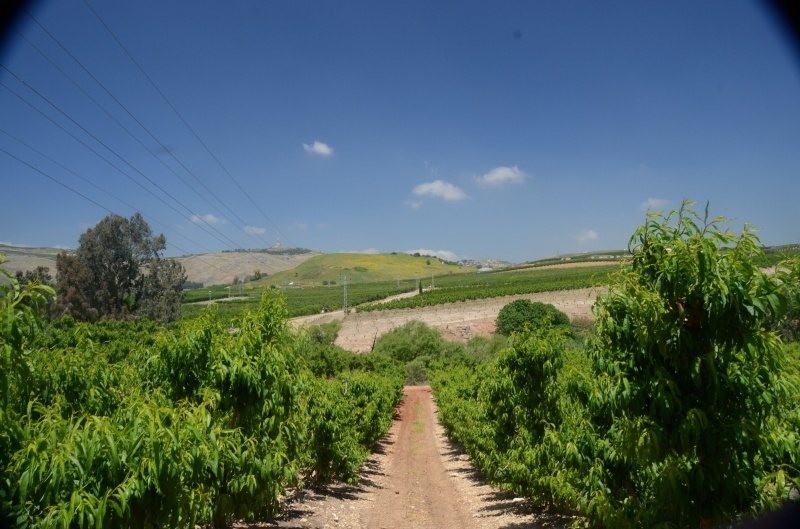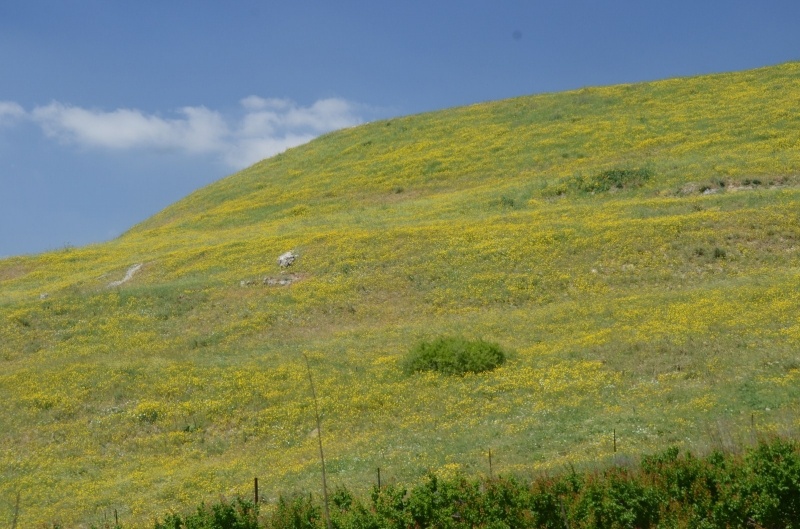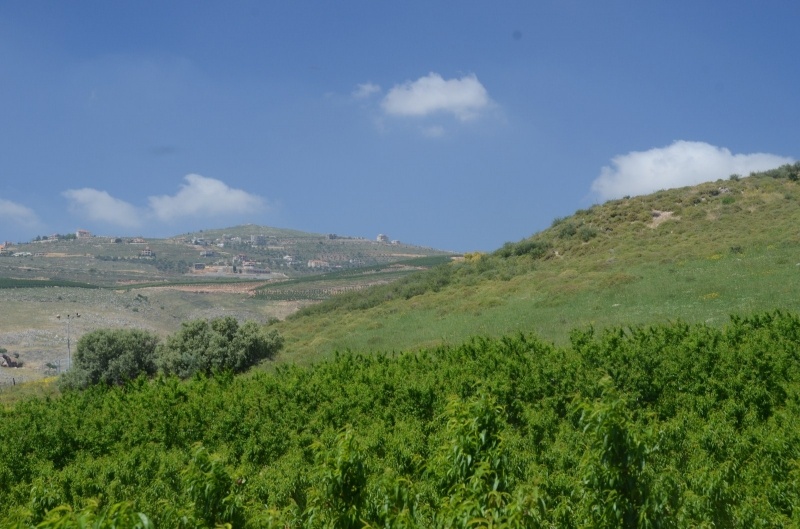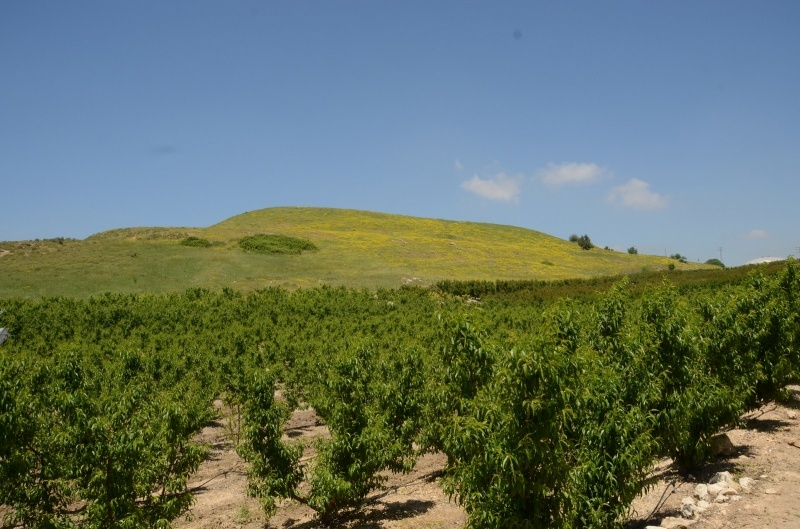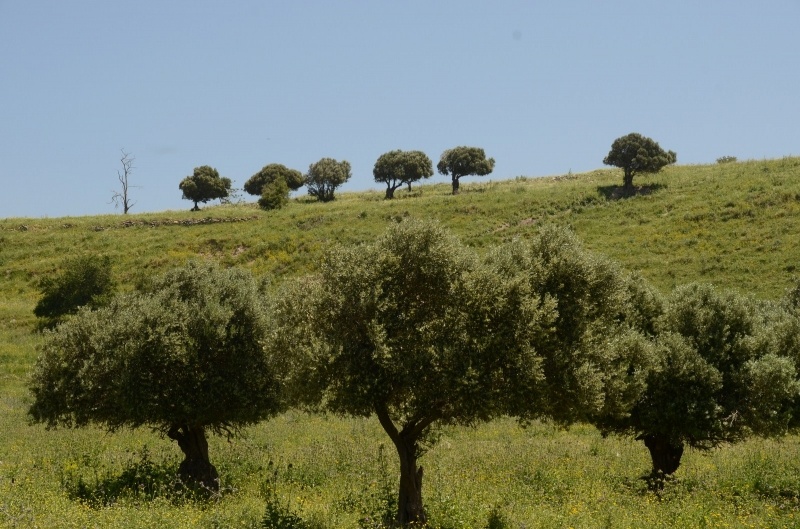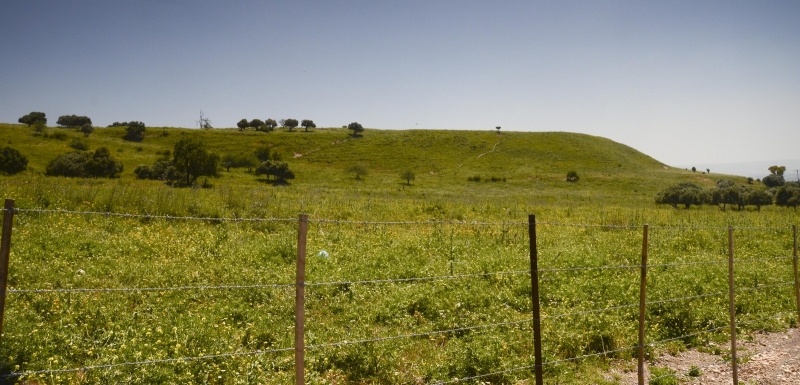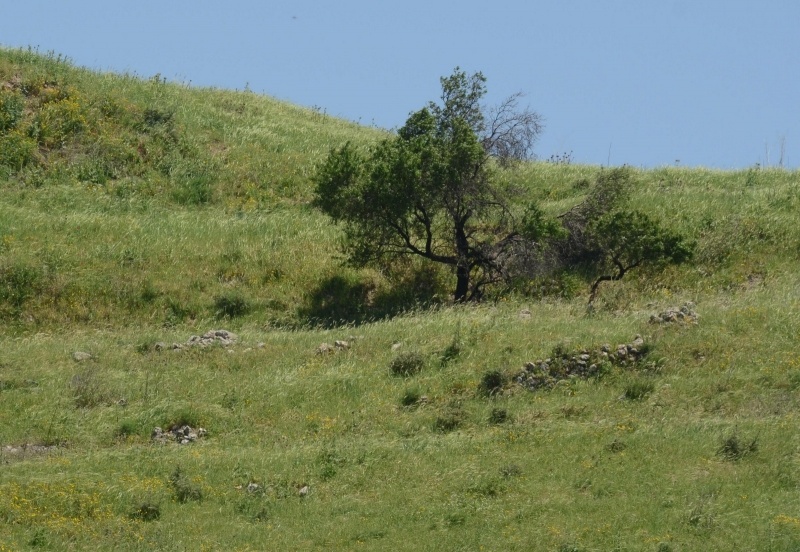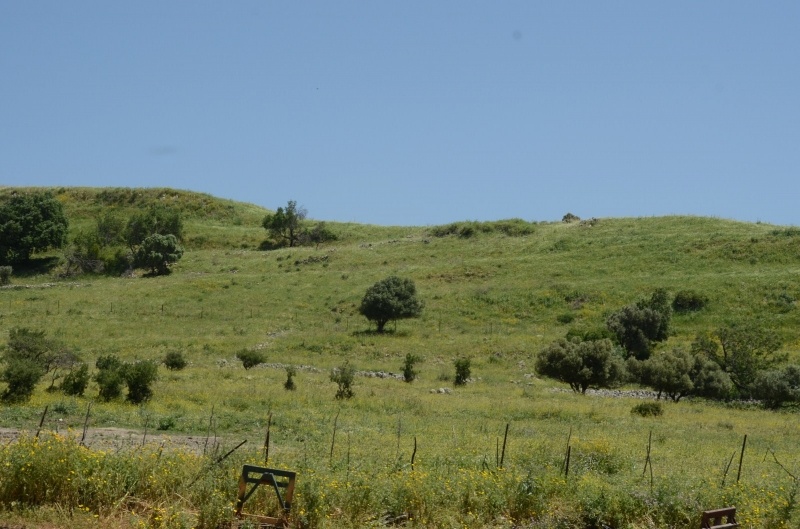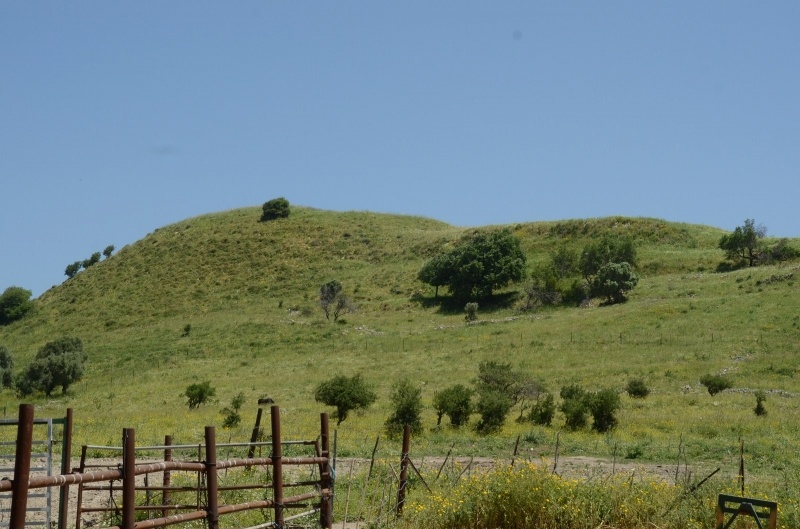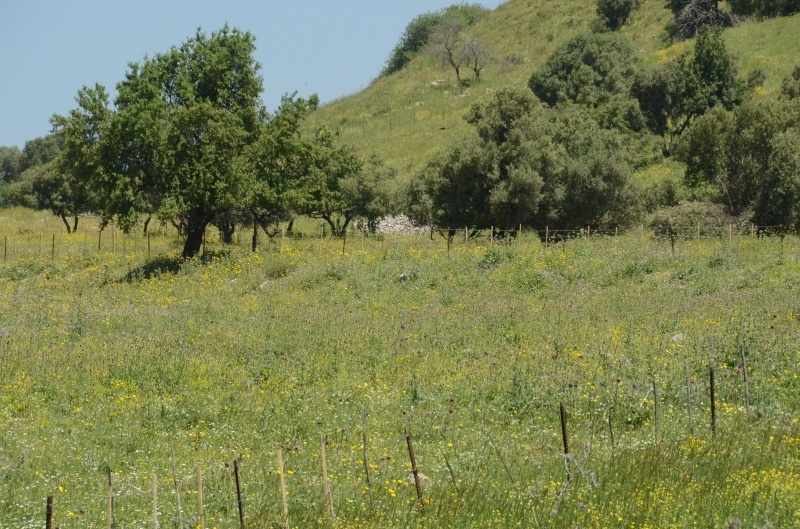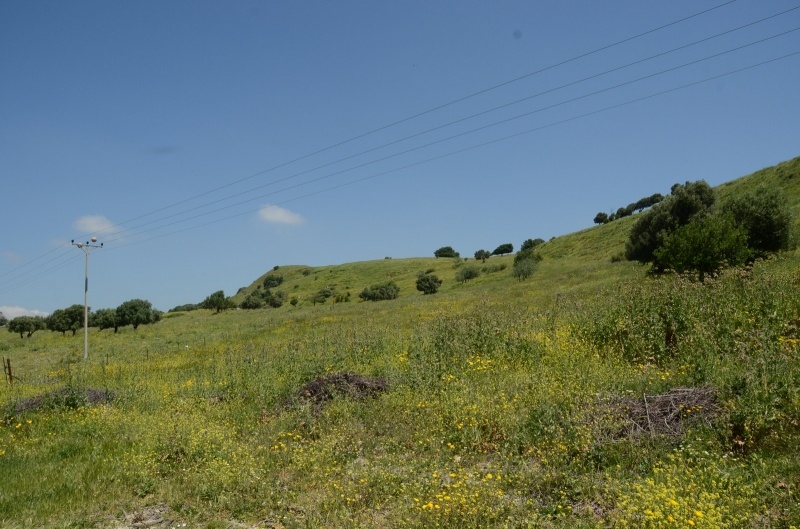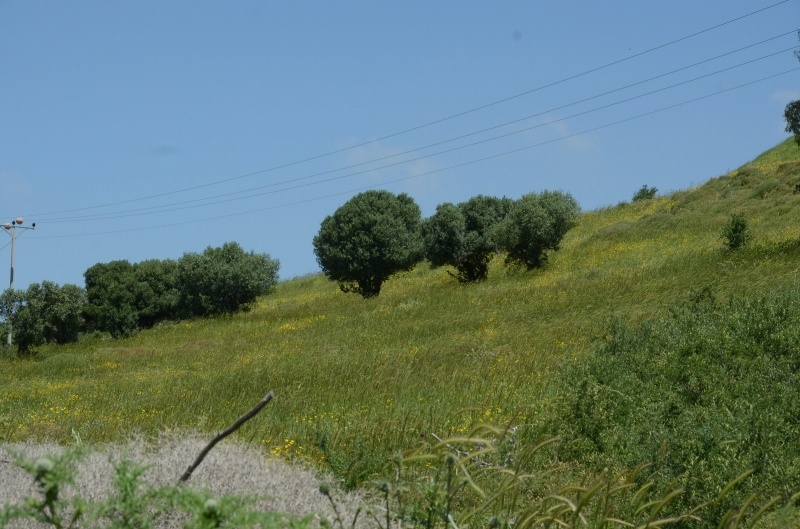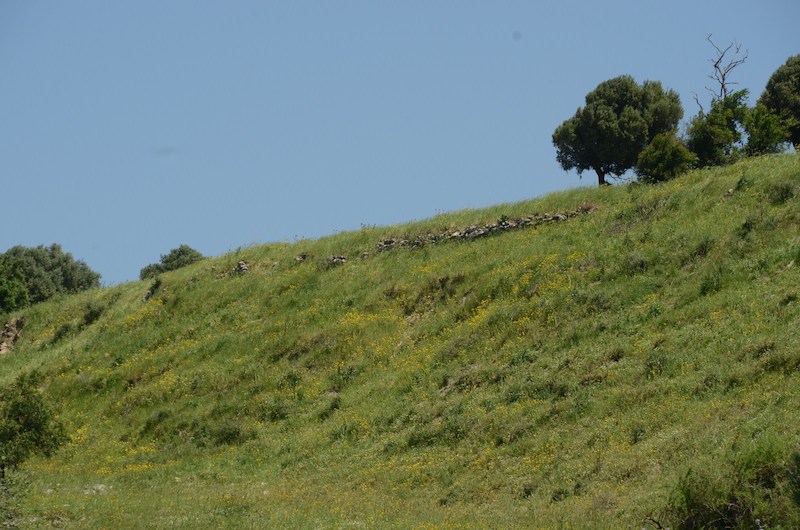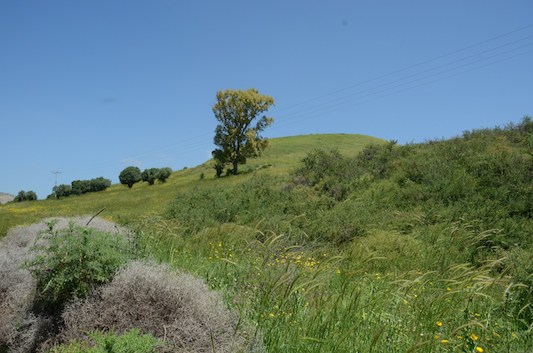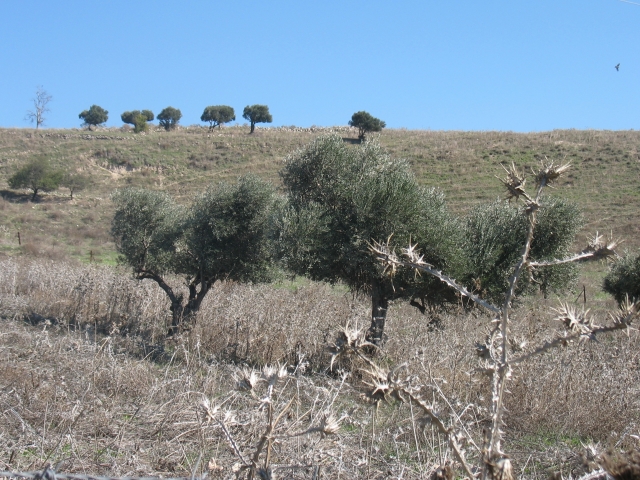Info
District: Safed
Population 1948: 380
Occupation date: 01/05/1948
Jewish settlements on village/town land before 1948: None
Jewish settlements on village/town land after 1948: Part of Moshav Yuval
Background:
Abil al-Qamh Before 1948
The village was built in a hilly area north of the al-Hula Plain, a short distance east of a highway that led north to al-Mutilla (some 3 km away) and south to Salad. It was about 1 km from the Lebanese border and had been part of Lebanon until 1923, when it was annexed to Palestine under the British Mandate. One of the meanings of the first part of the name, which came from a Semitic root, is “meadow.” The second part, qamh, means “wheat” in Arabic. Abil al-Qamh was established on a site that had been inhabited as early as 2900 B.C. and that remained populated for at least 2,000 years. This was the location of one of the cities that was captured by Thutmose 111 in 1468 ac. During the reign of David it became a fortified place that was later captured by the Arameans. Assyrian inscriptions mentioned Abel-Beth-Ma’aka as one of the towns they captured in 733 or 734 B.C. The name of Abil al-Qamh next appears much later, in a work by the Arab geographer Yaqut al-Hamawi (d. 1228). In 1596, Abil al-Qamh was a village in the nahiya of Tibnin (liwa’ of Safad) with a population of 143. It paid taxes on a number of crops, including wheat, barley, and olives, as well as on other types of produce and property such as goats, beehives, and vineyards.
In the late nineteenth century, Abil al-Qamh was situated near a stream and surrounded by arable land. There was a church in the village and ancient ruins stood nearby. In modern times the village had a triangular outline that conformed to the contours of the hill on which it was built. The village houses were made of a combination of mud and stone, concrete and stone, or concrete. Its population consisted of 230 Muslims and 100 Christians. Agriculture was the mainstay of the village economy. In 1944145 a total of 2,535 dunums was allocated to cereals and 299 dunums were irrigated or used for orchards. The wheat fields that ringed the site of the village, well-known for their fertility, benefited from abundant water. The water was so plentiful that the people of the region sometimes called the village Abil al-Mayya (“the meadow of water”). In addition to other ruins in the vicinity, an archaeological site, located east of the village near Kefar Gil’adi contained rock-hewn tombs, granite tools, and tombstones.
Occupation and Depopulation
An Israeli intelligence report issued at the end of June 1948 claimed that the village was evacuated on 10 May 1948. The occupation of eastern Galilee during this period was assigned to various Zionist forces, mainly the Palmach’s First Battalion, within the scope of Operation Yiftach.
Operation Yiftach fell within the guidelines of Plan Dalet and was masterminded by Palmach commander Yigal Allon. The Palmach launched Yiftach between mid-April and late May 1948 to gain control of eastern Galilee before the end of the British Mandate on 15 May. It succeeded in occupying the whole area (including the panhandle) and “cleansing” it of its inhabitants. The Palmach’s First Battalion spearheaded the operation. Palestinians in eastern Galilee who had not fled despite attacks or intimidation were expelled as soon as their villages or towns were occupied. All Palestinian villages in eastern Galilee were depopulated and many of them were destroyed. Safad, the major town in the district, was also depopulated.
Zionist forces inaugurated Operation Yiftach with an attack on the village of al-Nabi Yusha’, which lay about midway between the city and Abil al-Qamh. When the British evacuated the area around al-Nabi Yusha’ on 15 April, the police station in this village was commandeered by units of the Arab Liberation Army and other militiamen. On 17 April, Zionist troops attacked and seized the village and its police station, which became the headquarters for the operation. The Jewish settlement of Dafna also became an important military center; It was one of the launching pads for forays undertaken by Zionist forces during this period.
The leader of the operation, Yigal Allon, did not hide his desire to drive the residents out of the area. According to Israeli historian Benny Morris, he wrote later: “We regarded it as imperative to cleanse the interior of the Galilee and create Jewish territorial continuity in the whole of Upper Galilee.” According to Morris, he justified this on security grounds: “clearing the area [eastern Galileej completely of all Arab forces and inhabitants was the simplest and best way of securing the frontier.” In his report to the Haganah General Staff on 22 April, Allon recommended “an attempt to clear out the beduins encamped between the Jordan [Riverj, and Jubb Yusuf and the Sea of Galilee.” By this time Operation Yiftach had already begun.
Allon achieved his aims partly by direct attack and partly by using a campaign of psychological warfare. He devised a “whispering campaign” to intimidate villagers in eastern Galilee into fleeing: “I gathered the Jewish mukhtars, who had ties with different [local] Arab villages,” Allon wrote, “and I asked them to whisper in the ears of several Arabs that giant Jewish reinforcements had reached the Galilee and were about to clean out the villages of the Hula [and to advise them, as friends, to flee while they could.” The “whispering campaign” was implemented between 10 and 15 May, during Operation Yiftach, and precipitated the fight of 18 percent of the population of the Galilee panhandle.
One of the main objectives of Operation Yiftach was to seize control of the city of Salad, the major population center in northeastern Palestine.
In the spring of 1948, Zionist forces prepared for assaults on Safad and on another city, Tiberias, by launching devastating attacks on adjacent villages; these attacks demoralized the cities to be occupied. The village of ‘Akbara was chosen, in early May 1948, to serve as an example to the people of Safad. On 9 May, units of the Palmach’s First Battalion attacked ‘Akbara in order to “create among the Arabs of Safad a feeling that they were about to be surrounded and would be unable to flee,” according to the operational orders. The final assault on Safad took place on 10—11 May 1948, and with the fall of the city, the residents of several villages in the district reportedly left out of fright.
After the occupation of Salad on 11 May 1948, the units participating in Operation Yiftach were ordered to move northwards and block all routes for the entry of Lebanese and Syrian forces into the country before 15 May. On the night of 14—15 May, the Palmach’s First Battalion advanced on Qadas and the neighboring al-Malikiyya, according to the History of the Haganah. Qadas fell into their hands by the morning, but Lebanese units crossed the border later that day and mounted a large counteroffensive, forcing the Palmach to withdraw from the village. However, the Lebanese forces were stopped in their tracks at Qadas and advanced no further, because of their heavy losses during the operation and the simultaneous Israeli raids on targets within Lebanese territory. By 25 May Operation Yiftach came to an end.
Israeli Settlements on Village Lands
In 1952, Israel established the settlement of Yuval on village land, about 1.5 km from the site. Yuval is near the border of the village land of al-Zuq al-Fawqani.
The Village Today
The village site is overgrown with grasses and weeds. A grove of trees stand in the northeast corner and stones from destroyed houses are strewn throughout the site. The surrounding land is used as pasture.
-----------------------------
Source: al-Khalidi, Walid (ed.). All that remains: the Palestinian villages occupied and depopulated by Israel in 1948. Washington DC: 1992.


